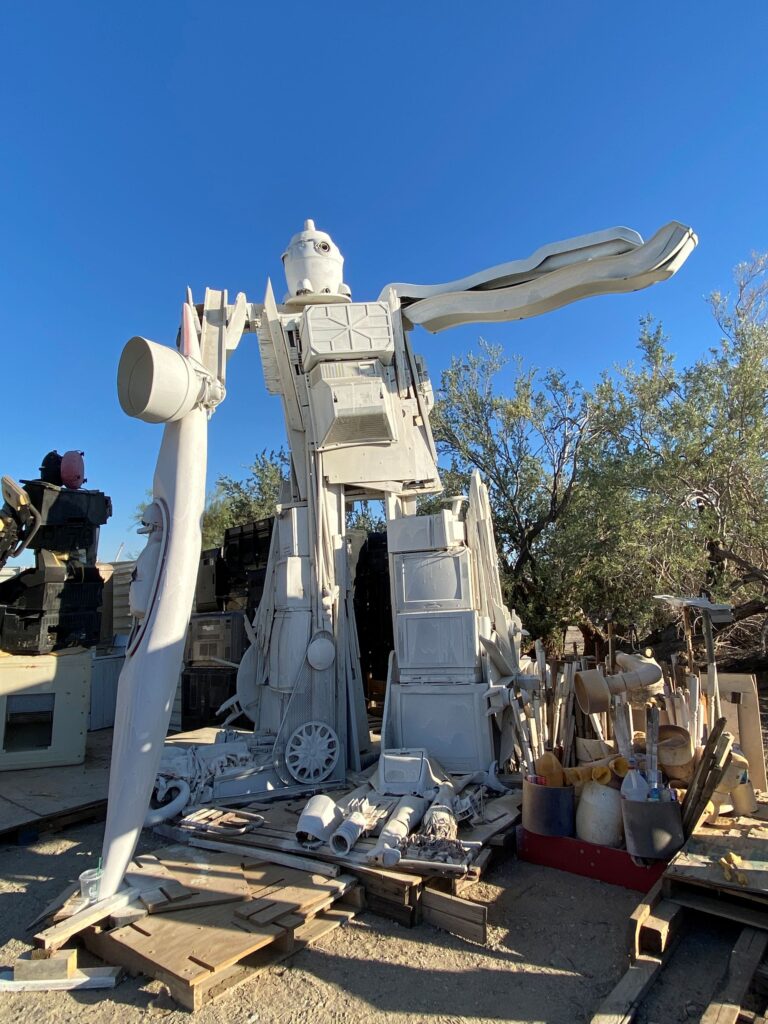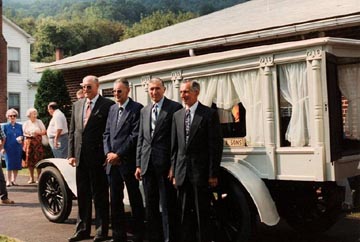
California has a long tradition of turning repurposed “junk” into art to make social commentary. After World War II, the development of synthetic materials and the mass production of waste materials expanded the possibilities for using discarded materials in art. Kenny Irwin, an artist at East Jesus who designed the permanent installation “Robolights” in Palm Springs, combines junk in beautiful, imaginative, and remarkable ways. His whimsical sculptures often include giant robots in motion, made from scrap metal, wood, televisions, water heaters, kayaks, and vacuum cleaners.
Despite the whimsy and eccentricity of his art, Irwin’s work has a certain dignity. He says that creating his art from “waste” goes beyond mere practicality. Irwin believes that people have an ethical responsibility to keep waste out of landfills and use it in productive ways. “The Earth is a closed system,” he says. “This stuff has nowhere to go.”
Bruce Boyd, another artist at East Jesus, also works with repurposed objects, but selects objects based on size, color, patina, and orientation. Some of his assemblages of rusted steel and other discarded materials are reminiscent of small-scale urban landscapes. His art is careful and methodical, and it has a message. His work, “Sad Dryer,” is a commentary on the mere survival of the devastating forces of late capitalism.
While Salton Sea artists and residents fight the destructive forces of fast consumption, they embrace sustainable lifestyles In And with the “ruined” landscape of the sea.
THE FUTURE OF THE SALTON SEA
California estimates that the Imperial Valley could produce up to 600,000 tons of lithium annually. Companies such as Berkshire Hathaway Renewables, EnergySource and Controlled Thermal Resources are vying to capitalize on the sea’s lithium-rich geothermal fields. Because the companies intend to use the infrastructure already in place to extract lithium from the sea’s deep geothermal brines, they claim that the environmental impact of mining will be negligible.
But these high-tech plans to “redevelop” and reinvest in “Lithium Valley” have proven to be a rallying point for controversial public and political debate. Residents of the Imperial Valley have expressed concerns about the impacts of lithium mining. It takes 500,000 gallons of water to extract one ton of lithium. Using the scarce water of the Colorado River for lithium processing could cause devastating water shortages in a region already suffering from drought and water stress.




